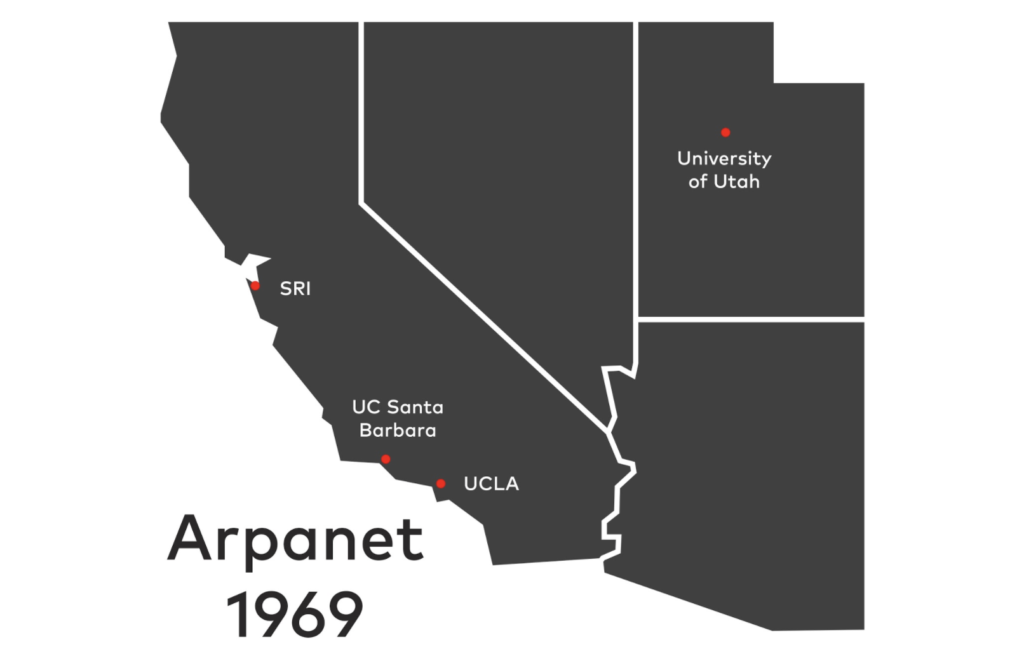In the 1960s, the United States Advanced Research Projects Agency (ARPA) created a communications network designed to transmit data between computer systems. When it was first developed, the primary goal of the network was to enhance the speed and effectiveness of government research teams, allowing scientists and researchers to share information and collaborate at a distance. Data was broken down into small “packets,” allowing for easier transmission over limited bandwidth. In a very literal sense, there was a limit to how much data you could send at any one time down a given wire, and the creation of “packets” was a way to circumvent that limit. By the 1970s, a system for adding new devices to existing networks was developed; the TCP/IP protocol, which serves as the basis for the modern Internet’s core architecture.
In the wake of TCP/IP’s development, the network grew quickly. New devices were added, and the network’s existence was eventually publicized in 1972 at the International Computer Communication Conference. ARPANET would eventually grow into what we today know as the Internet, as more and more computers were networked and new innovations lowered the barrier to entry. In little more than two decades after the first successful tests of ARPANET, the Internet had been opened up to the public, and it had already begun to assume the important role it now plays in the lives of so many.
Through the pioneering research of scientists and mathematicians in both the Defense Department and in academia, access to information has been democratized, and whole new pathways of human culture and development have been opened. ARPANET was the foundation upon which the Internet has been built. It might be difficult to imagine a world without the Internet, a world without Wifi, a world without smartphones. But without ARPANET, many of these things would never have existed.
ARPANET’s influence on the internet is clear, but as time persists, new technologies and new methods of forming connections are being pioneered and created. Mesh networking is changing the way that devices communicate within local networks, and new versions of the TCP/IP protocol are currently being disseminated and developed. As we move forward into the future of networking, it’s important to remember how things began: with the creation of a tool for furthering communication and collaboration between different people with disparate ideas.


You must be logged in to post a comment.